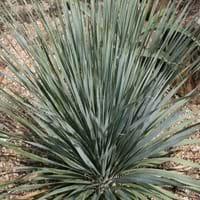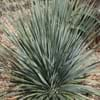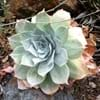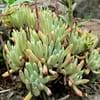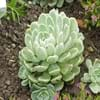Life Span
Perennial
Perennial
Type
Cactus or Succulent
Perennial
Origin
Southwestern United States, Mexico
Hybrid origin
Types
Dasylirion acrotrichum, Dasylirion berlandieri, Dasylirion cedrosanum
Victoria Rhubarb
Colorado Red Rhubarb
Turkish Rhubarb
Number of Varieties
Not Available
Habitat
Desert, Dry areas, Rocky areas
gardens, Grassland, Humid climates, Tropical regions, Urban areas
USDA Hardiness Zone
12-15
5-8
Sunset Zone
10, 11, 12, 13, 14, 15, 16, 17, 18, 19, 20, 21, 22, 23, 24
2b, 3a, 3b, 4, 5, 6, 7, 14, 15, 16, 17
Habit
Rosette/Stemless
Clump-Forming
Flower Color
Yellow
Light Pink
Flower Color Modifier
Not Available
Not Available
Leaf Color in Spring
Green, Blue Green
Green, Dark Red
Leaf Color in Summer
Green, Blue Green
Green, Dark Red
Leaf Color in Fall
Green, Blue Green
Green, Dark Red
Leaf Color in Winter
Green, Blue Green
Light Green
Leaf Shape
Narrow
Compound
Plant Season
Spring, Summer, Fall, Winter
Spring, Summer, Fall
Sunlight
Full Sun
Full Sun, Partial Sun
Type of Soil
Loam, Sand
Clay, Loam
The pH of Soil
Neutral, Alkaline
Acidic, Neutral, Alkaline
Soil Drainage
Well drained
Average
Bloom Time
Spring
Summer, Late Summer
Tolerances
Drought
Drought
Where to Plant?
Container, Ground
Ground
How to Plant?
Leaf Cutting, Seedlings, Stem Cutting
Stem Planting
Plant Maintenance
Medium
Medium
Watering Requirements
Does not require lot of watering, Water occasionally
Do Not over Water, Requires regular watering, Use Mulches to help prevent water loss during hot and windy weather, Water Deeply
In Summer
Lots of watering
Lots of watering
In Spring
Moderate
Moderate
In Winter
Average Water
Average Water
Soil pH
Neutral, Alkaline
Acidic, Neutral, Alkaline
Soil Type
Loam, Sand
Clay, Loam
Soil Drainage Capacity
Well drained
Average
Sun Exposure
Full Sun
Full Sun, Partial Sun
Pruning
Remove damaged leaves, Remove dead branches, Remove dead leaves, Remove dead or diseased plant parts
Remove damaged leaves, Remove dead branches, Remove dead leaves
Fertilizers
All-Purpose Liquid Fertilizer, Fertilzer with low nitrogen content
All-Purpose Liquid Fertilizer
Pests and Diseases
Red blotch
Red blotch
Plant Tolerance
Drought
Drought
Flower Petal Number
Single
Not Available
Fragrant Bark/Stem
Not Available
No
Foliage Texture
Bold
Coarse
Foliage Sheen
Matte
Glossy
Attracts
Bees, Butterflies, Not Available
Not Available
Allergy
Not Available
Skin irritation
Aesthetic Uses
Ground Cover
Showy Purposes
Beauty Benefits
Not Available
Not Available
Environmental Uses
Air purification
Air purification
Medicinal Uses
Not Available
Not Available
Part of Plant Used
Not Available
Whole plant
Other Uses
useful as a ground cover
Culinary use, Used as Ornamental plant
Used As Indoor Plant
No
No
Used As Outdoor Plant
Yes
Yes
Garden Design
Container, Dried Flower, Everlasting, Feature Plant, Rock Garden, Wall, Wildflower
Feature Plant, Mixed Border
Botanical Name
DASYLIRION berlandieri
RHEUM 'Ace of Hearts'
Common Name
Blue Giant, Blue Twister, Desert Spoon, Zaragosa
Ace of Hearts Ornamental Rhubarb, Ornamental Rhubarb
In Hindi
Blue Giant Grass
सजावटी प्रकार का फल
In German
Blue Giant Grass
Ornamental Rhabarber
In French
Blue Giant Herbe
rhubarbe ornementale
In Spanish
Blue Grass gigante
Ornamental de ruibarbo
In Greek
Μπλε Giant Grass
καλλωπιστικά Ραβέντι
In Portuguese
Blue Grass gigante
ornamental ruibarbo
In Polish
Błękitny Gigant Trawa
ozdobne Rabarbar
In Latin
Giant herba blue
decentius Rhubarb
Phylum
Tracheophyta
Tracheophyta
Class
Not Available
Not Available
Order
Asparagales
Caryophyllales
Family
Agavaceae
Polygonaceae
Clade
Angiosperms, Monocots
Angiosperms, Core eudicots, Eudicots
Tribe
Not Available
Not Available
Subfamily
Nolinoideae
Not Available
Season and Care of Blue Giant and Ornamental Rhubarb
Season and care of Blue Giant and Ornamental Rhubarb is important to know. While considering everything about Blue Giant and Ornamental Rhubarb Care, growing season is an essential factor. Blue Giant season is Spring, Summer, Fall and Winter and Ornamental Rhubarb season is Spring, Summer, Fall and Winter. The type of soil for Blue Giant is Loam, Sand and for Ornamental Rhubarb is Clay, Loam while the PH of soil for Blue Giant is Neutral, Alkaline and for Ornamental Rhubarb is Acidic, Neutral, Alkaline.
Blue Giant and Ornamental Rhubarb Physical Information
Blue Giant and Ornamental Rhubarb physical information is very important for comparison. Blue Giant height is 17.78 cm and width 10.16 cm whereas Ornamental Rhubarb height is 71.10 cm and width 81.30 cm. The color specification of Blue Giant and Ornamental Rhubarb are as follows:
Blue Giant flower color: Yellow
Blue Giant leaf color: Green and Blue Green
Ornamental Rhubarb flower color: Light Pink
- Ornamental Rhubarb leaf color: Green and Dark Red
Care of Blue Giant and Ornamental Rhubarb
Care of Blue Giant and Ornamental Rhubarb include pruning, fertilizers, watering etc. Blue Giant pruning is done Remove damaged leaves, Remove dead branches, Remove dead leaves and Remove dead or diseased plant parts and Ornamental Rhubarb pruning is done Remove damaged leaves, Remove dead branches and Remove dead leaves. In summer Blue Giant needs Lots of watering and in winter, it needs Average Water. Whereas, in summer Ornamental Rhubarb needs Lots of watering and in winter, it needs Average Water.
